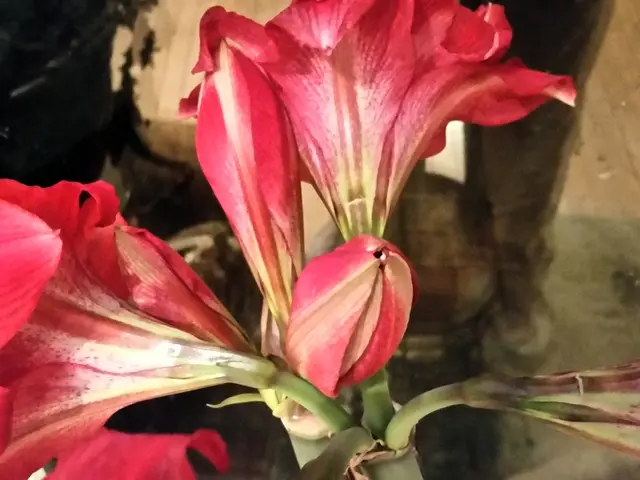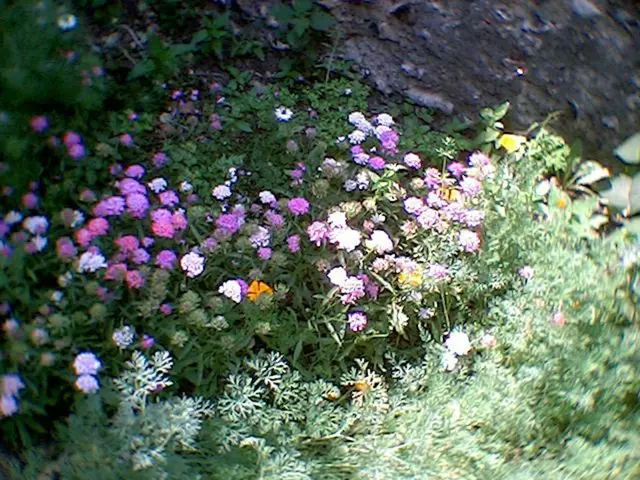Guide for Crafting a Mesmerizing Lunar Haven, Blooming Spectacularly Under Moonlight
Rewritten Article:
Craft a mesmerizing nocturnal oasis by constructing an evening garden that contrasts beautifully under moonlight. It's not just about being a night owl to immerse yourself in the garden's blossoming season. A few plants with paler blooms and silver or chartreuse foliage will illuminate the evening hours, allowing you to unwind without rushing home.
Designing Your Dream Garden
Picking the Perfect Spot
Before you choose your garden's location, observe the moon's path for several nights, and identify areas with less obstruction from trees and minimal shadows. Peace and quiet are essential, so make sure to maintain a safe distance from road noise and bothersome neighbors.
Selecting Your Plants
To guarantee maximum nighttime visibility, opt for blooms and foliage with pale or pastel colors that really stand out under the moon's glow. Consider cultivating cleome, commonly known as spider flowers, for an added dramatic effect. Nicotiana (flowering tobacco) is another great selection, offering a delightful fragrance once the sun sets. For those familiar with petunias, the 'White Wave' variety is a remarkable addition, with continuous blooms spreading up to 3 feet in a single season.
Angels' trumpets and sweet alyssum display massive white flowers and continue to thrive under moonlight. Moreover, these fragrant plants attract moths at night, contributing to the enchanting feel of your garden.
Planting Your Garden
Line the edge of your garden bed with low ground covers to create a lush base. In the middle, utilize plants between 12 and 24 inches tall, saving the tallest plants for the back of the garden, which should reach at least 2 feet in height. Note the height specifications on plant tags to guarantee proper placement.
Cultivating an Evening Container Garden
A compact area can accommodate a captivating container garden. Just keep in mind that various plant heights are necessary for visual interest.
Picking the Perfect Location
If you prefer to grow your evening garden in pots or containers, choose almost any spot-on a patio, deck, near a walkway, alongside your existing garden, or in a lawn corner.
Choosing Your Plants
Typically, nighttime plants work well in container gardening, particularly annuals. Be mindful that a little bit of aroma goes a long way, so limit the use of scented blooms and maintain an appropriate distance between them. Cleome, with its heat tolerance and staking-free quality, is an excellent choice. Adding green-and-white caladiums and chartreuse bacopa to your design creates an ethereal glow.
For a noticeable feature, pick one plant to act as the showpiece. 'White Cosmos' is a prolific bloomer with striking flowers and potential for cutting. At least one plant in your after-dark garden, such as vanilla-scented white heliotrope, should offer a pleasant perfume.
Designing Your Container Garden
Similar to a standard evening garden, layer the plants for visual appeal and height variation. Use a combination of unique containers in assorted shapes, sizes, and materials or repurpose objects you already own, like an old bucket. Dark-colored pots accentuate light plant colors, giving the illusion of flowers floating in the air.
Lighting Enhancements for Your Moonlight Garden
The Victorians referred to after-six gardens as "dream gardens" because of the magical, mysterious allure created by moonlight. Even on cloudy or moonless nights, you can still enjoy your enchanting garden using soft, gentle candles, path lights, lanterns, or twinkle light strings to illuminate pale plant colors. Maintain a soft glow to replicate the moon's subtle radiance. Solar-powered lights are an energy-efficient option that minimizes the need for electrical installations.
A small recirculating fountain or other soothing water feature can help block traffic noise and create a restful ambiance. The distant sound of crickets will also work just fine.
Enrichment Data:
Designing an evening garden with plants that glow under moonlight involves choosing flowers and foliage with pale or reflective hues and incorporating gentle, moon-like lighting.
- Choosing the Right Plants:
- Select plants that thrive in low light conditions, such as cleome, nicotiana (flowering tobacco), sweet alyssum, angel’s trumpet, and 'White Wave' petunias.
- Consider plants with silver-gray or variegated leaves, such as hostas, Schefflera Moonlight, and other plants with a glowing effect.
- Incorporate fragrant night bloomers like angels' trumpet and nicotiana, which attract pollinators and enhance the sensory experience.
- Garden Setup Tips:
- Carefully select locations with adequate soil and daytime light conditions for healthy growth and bright evening blooms.
- Combine foliage and flowers to maintain visual interest in your garden, especially during periods when certain plants are not in bloom.
- Lighting:
- Use soft, gentle lighting such as candles, lanterns, or twinkle lights to mimic the moon's gentle glow, preserving the dreamy, mystical atmosphere of the garden.
- Place low-intensity path lights along walkways to emphasize the garden layout and let pale plant colors pop without overwhelming them.
- Opt for solar-powered lights to reduce expenses and energy consumption, while still providing a subtle nighttime glow.
- Avoid harsh or overly bright lights to keep the garden's natural luminance intact.
- To create a captivating evening garden, choose plants with pale or reflective blooms and foliage, such as cleome, nicotiana (flowering tobacco), sweet alyssum, angel’s trumpet, and 'White Wave' petunias, for maximum nighttime visibility.
- Incorporate fragrant night bloomers like angels' trumpet and nicotiana, which not only offer a delightful aroma but also attract pollinators and enrich the sensory experience of your home-and-garden lifestyle.
- For a dream-like atmosphere, consider planting hostas, Schefflera Moonlight, and other plants with glowing silver-gray or variegated leaves in your outdoor gardening project.








